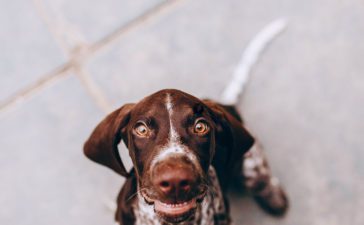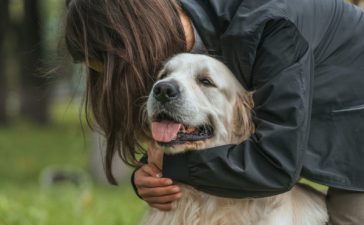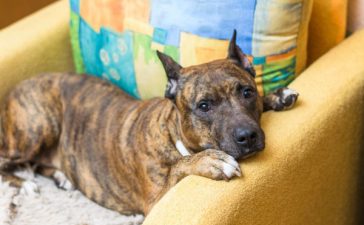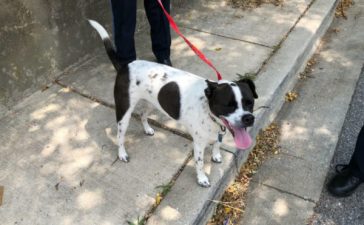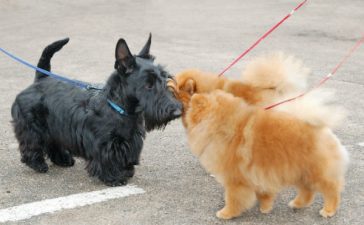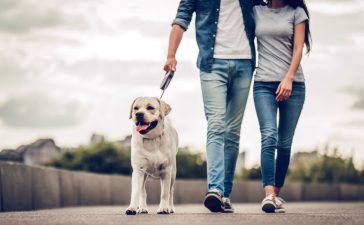[ad_1]
FOR A LIMITED TIME Watch the all-new Dunbar Academy Dog-Dog Reactivity webinar for FREE, where Dr. Ian Dunbar explains the common causes of reactivity and how to resolve reactivity using 10 easy and effective exercises.
Dog-Dog Aggression is really upsetting for dogs and their owners alike — both are excruciatingly stressed but additionally, all too often the stress and anxiety remains a chronic condition because most treatment protocols are so slow. Also, I think many people are scared to attempt quick resolution because of the “aggression” label. However, after carefully analyzing behavior, it would appear that most dog-dog reactivity is fear-based (a lot of lunging and snapping) and a significant proportion stems from over-the-top excitement and exuberance from wanting to play but not having the social savvy or confidence to know how to do so appropriately. Hence loads of barking and growling. Reactivity is not always aggression; indeed, most dog-dog reactivity is fueled by over-excitement or stress and anxiety of dogs AND their owners
Earlier today, I was looking for a Throwback Thursday photo to post on Instagram (my second post!!! Yay!) and found these two. These dogs were the very best of friends: Claude (big red dog), Dune an American Bulldog and little Frenchie Hugo. This is how they spent their time: sleeping when not playing. When they played, it sounded like they were going to kill each other. But when we would film and replay the footage with no sound (so that we couldn’t hear the incessant barking, growling and snarling), the many play-solicitation and play-confirmation behaviors became obvious. All three dogs would display about 30 friendly and appeasing behaviors per minute — mainly elbow flexes, weight-shifting and protruding tongue. We call the per-minute index the Friendly Quotient. When fighting dogs are intent on causing damage, their Friendly Quotients are ZERO.
The Friendly Quotient is a wonderful guideline for interpreting OTT (Over-The-Top) play-styles to distinguish between heavy-play and animosity/aggression. However, as always, the Fight:Bite Ratio is the real nitty-gritty for determining whether or not a dog is actually dangerous to other dogs. The question is: How many fights necessitated at least $250 worth of veterinary treatment? For well over 99% of dogs, the Fight:Bite Ratio is Any Number:ZERO, e.g., 3:0, 8:0 or 19:0. Obviously, these dogs are NOT dangerous and so, for the sake of both dogs and owners, a Rapid Resolution is urgently needed and recommended.
For these dogs, the step-back, Come-Sit-Watch routine with a Tug Toy (as described and demonstrated in our latest Dog-Dog Reactivity Webinar) quickly produces dramatic results — immediate disengagement, instant Recall, lightning Sit and rock-solid Stay with intense Focus ON THE OWNER.
Without a doubt, the best tack to prevent unwanted harassment (or attack) by another dog, whether on-leash or off-leash, is to instruct your dog to Sit or Down and Focus on you. This presents a much less challenging picture to the other dog — namely, your dog’s backside (often wiggling in anticipation of the tug) and your dog focused on something much more important than doggy disagreement, i.e., focused on YOU. Both the other dog and your dog now feel less threatened, since neither one is eye-balling the other and so, it is easier to defuse the situations. And of course, all bystanders see that your dog is obediently sitting.
Aside from having a good time, the major purpose of playing Tug is to practice quickly calming down and imbuing confidence in an OTT or anxious dog and getting it to focus and engage with you.
But many people can’t get their dog to Sit and Focus when it’s excited or anxious, largely because they neglected to phase out Food Lures and Food Rewards in training. Consequently, when excited/stressed upon encountering or being harassed by another dog, they blow off the food (which has by now become a bribe) and the owner has no control.
And so, either go back and retrain — but this time phase out the food lures in the very first session (no food in hand) and then progressively phase out the need of food rewards by asking More for Less, i.e., seeing how many behaviors your dog will gladly offer for the prospect of a single food reward. To offer a point of reference here, the average Lab pup in class will happily perform 20 Puppy Push-ups (40 behaviors) for a single treat.
Or, retrain with a Tug Toy that has been energized as a powerful Secondary Reinforcer. I prefer the Tug as a training aid for dog-dog reactivity because we don’t know how other dogs might react if you used food or a tennis ball. Your dog’s Tug means nothing to other dogs but it will come to mean the world to your dog as a secondary reinforcer.
For your dog’s peace of mind, absolute CONTROL IS ESSENTIAL. Not only does a reliable Sit+Focus prevent a lot of harassment from other dogs, but it also helps your dog deal with its fears and anxieties. So much anxiety in stressful situations stems from not knowing HOW to act. For example, a lot of people (not me obviously) become extremely anxious with the prospect of speaking in public and so we tell them, “Stand with your feet apart, hold the lectern with both hands, take a deep breath and read from large-print notes.” We discourage them from moving around, gesticulating or hyperventilating; simply stand still and read the words. Similarly, with dogs we need to teach them HOW to act when anxious and stressed or simply beside themselves with excitement; we want them to be still, calm and only focus on us. Tranquilo! Moreover, Sit+Focus helps control your dog’s excitement around squirrels, skateboards and unexpected visitors AND the whole training process helps control your nerves.
Try it out. The process works like a dream. Just 10 simple progressive steps and you practice the first six steps without any other dogs around.
FOR A LIMITED TIME Watch the all-new Dunbar Academy Dog-Dog Reactivity webinar for FREE, where Dr. Ian Dunbar explains the common causes of reactivity and how to resolve reactivity using 10 easy and effective exercises.
[ad_2]
Source link














